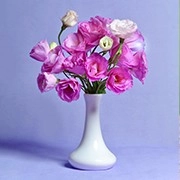Diamond Fun Facts

We've all heard about diamonds and their incredible sparkle, but did you know there's more to these precious stones than meets the eye? Whether you're looking to buy one or simply fascinated by their history, there are a lot of cool facts and knowledge about diamonds that we should all know.
So let's dive into 10 fascinating facts about diamonds, and we'll explore why these jewels are so much more than just a pretty face.

1. Where Do Diamonds Come From?
Diamonds are found all over the world, with notable sources in places like South Africa, Australia, and Canada. However, the process of mining diamonds can have serious environmental and social impacts. One of the biggest issues is ecological damage, as large-scale mining operations often involve deforestation, which destroys natural habitats and disrupts ecosystems. Soil degradation is another concern, as mining can make land infertile and unable to support plant life again. Moreover, the chemicals used in diamond extraction often end up polluting nearby water sources, which harms local communities and wildlife.
Transform your hair naturally with coconut oil! Learn how to apply it for maximum shine and strength!
Unveil The Charm And Craftsmanship Behind Pocket Watches, An Accessory That Stands The Test Of Time With Unmatched Elegance!
Want glowing skin? Try organic herbal soap! Cleanse, hydrate, and rejuvenate with nature's best ingredients!
Say Goodbye to Hair Woes: Simple and Effective Scalp Care Tips You Must Know!
Is Your Closet Slowly Crushing Your Spirit? Here’s How to Finally Tackle the Chaos!
Embrace Eco-Friendly Styles That Save the Planet and Redefine Fashion Trends!
2. A Glimpse into Diamond History
Diamonds have played a significant role in history, symbolizing power, wealth, and love. Perhaps the most famous diamond of all time is the Koh-i-Noor, one of the largest and purest diamonds ever discovered. This legendary gem has a rich history, passing through the hands of kings, queens, and empires, adding to the allure and mystique of diamonds over the centuries.
3. The Amazing Formation of Diamonds
The creation of diamonds is truly a miracle of nature. These precious gems are formed deep within the Earth, where extreme heat and pressure turn carbon into diamond over millions of years. Temperatures can reach between 1,100°C to 1,300°C, and pressure can be as high as 725,000 pounds per square inch. As molten rock rises to the Earth's surface, the carbon in the magma combines to form diamonds. Over time, geological activity brings them to the surface, where they can be mined and admired.
4. The Symbolism of Diamonds
Diamonds are often associated with the month of April, making them the birthstone for those born in that month. Wearing a diamond is believed to bring strength and courage, making them not just a fashion statement but a symbol of resilience. In addition, diamonds hold deep meaning in marriage and anniversaries, representing everlasting love and fidelity. Giving a diamond on an anniversary isn't just a gift; it's a reminder of enduring love and commitment that grows stronger over time.
5. Diamonds as Time Capsules
Diamonds aren't just beautiful; they are also the oldest material we can find on Earth. Some diamonds contain tiny crystals from deep within the Earth's mantle, holding secrets from billions of years ago. These microscopic diamonds are like time capsules that help scientists understand the early days of our planet. Studying them allows us to learn more about the Earth's internal processes and gives us a glimpse into the planet's distant past.

6. The Rise of Lab-Grown Diamonds
With advancements in technology, lab-grown diamonds have become an exciting innovation in the diamond industry. These diamonds are created in controlled lab environments using methods like Chemical Vapor Deposition (CVD), reducing their environmental impact significantly compared to mined diamonds. Lab-grown diamonds are made with the same material and structure as natural ones, making them a sustainable option for those who want to enjoy diamond jewelry while being mindful of the planet. At Joy Colori, we offer lab-grown diamonds that are carbon-neutral and climate-neutral, contributing to a more sustainable future.
7. The Hardness of Diamonds
Diamonds are the hardest known material on Earth, rating a perfect 10 on the Mohs scale of hardness. This makes them not only an excellent choice for jewelry but also incredibly useful in various industries. They are used in cutting, grinding, and drilling, thanks to their ability to withstand intense pressure and friction.
8. Understanding Diamond Color Grading
Diamonds are graded based on their color, with the scale ranging from D to J, where D represents completely colorless diamonds, and J shows slight color. The highest-quality diamonds, those graded D-F, appear nearly colorless, offering a pure and brilliant sparkle. Diamonds graded G-J are almost colorless and still appear very high quality to the untrained eye, showing only faint color when examined closely.
9. The Art of Diamond Cutting
One of the most important aspects of a diamond's beauty is how it's cut. The cut of a diamond affects its brilliance, fire, and overall appearance. The most common cuts include round, princess, and oval, each with its unique look and meaning. A well-cut diamond, like those perfected by Marshall Tolkowsky in 1919, can maximize a diamond's sparkle, making it a mesmerizing sight.

10. Diamond Carat Weight
Diamonds are weighed in carats, with one carat equaling 0.2 grams. As a diamond's carat weight increases, so does its value, as larger diamonds are rarer and more difficult to find. However, the carat weight alone doesn't determine a diamond's worth; factors like cut, clarity, and color also play important roles in its overall value.
In conclusion, diamonds are far more than just beautiful stones. They carry rich histories, amazing scientific significance, and even contribute to sustainability efforts. Whether you're wearing a diamond ring or simply admiring one from afar, remember that each diamond has a story to tell. Lykkers, the next time you see a diamond sparkling, you'll know the secrets that make it so special!

 · Fashion Team
· Fashion Team